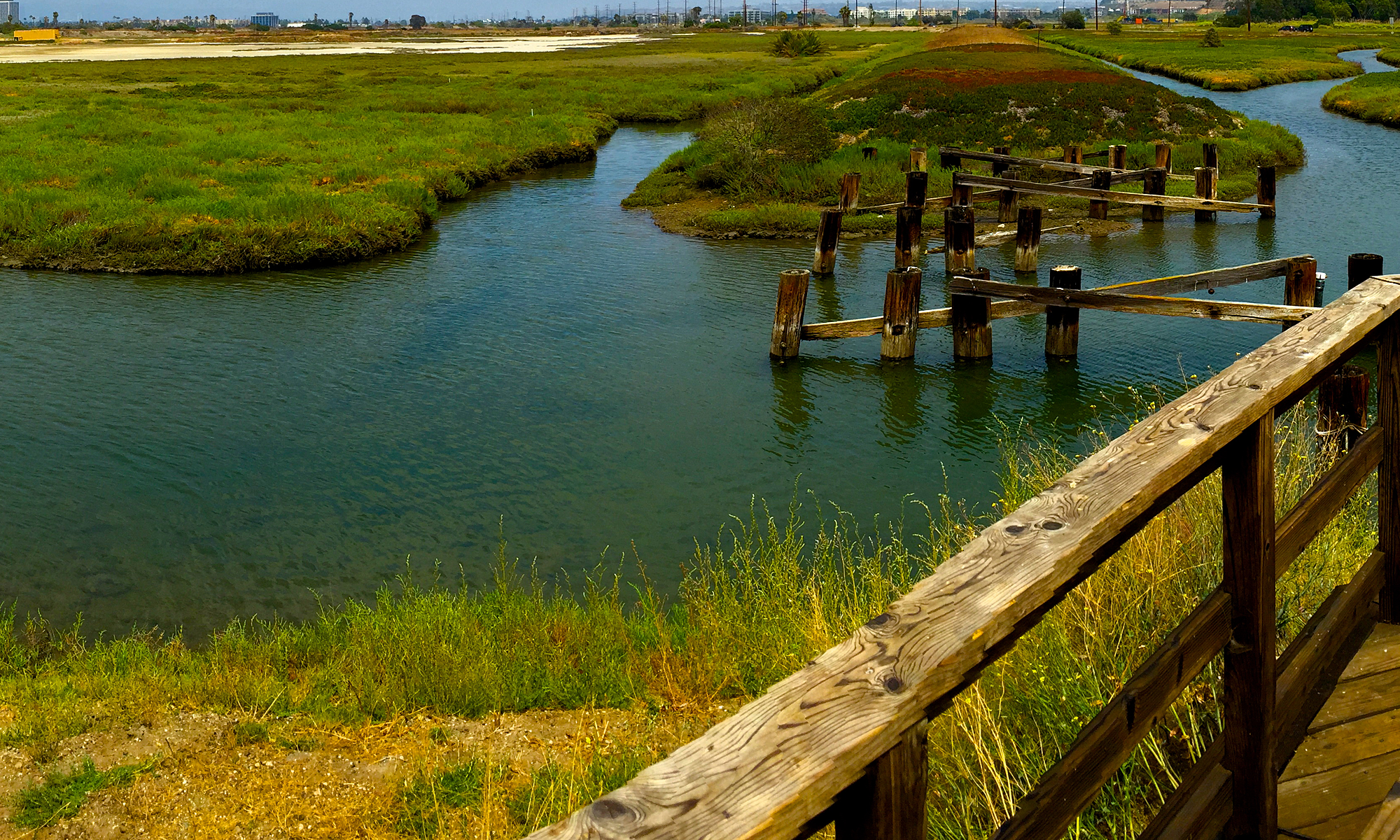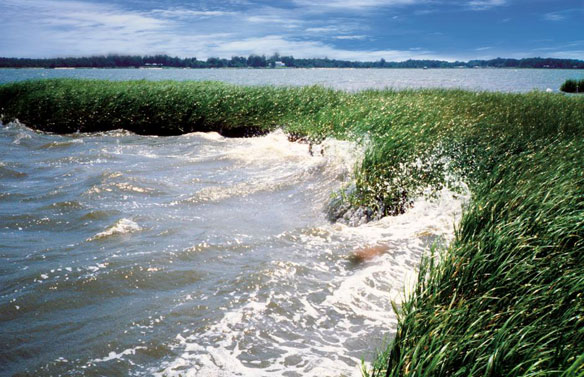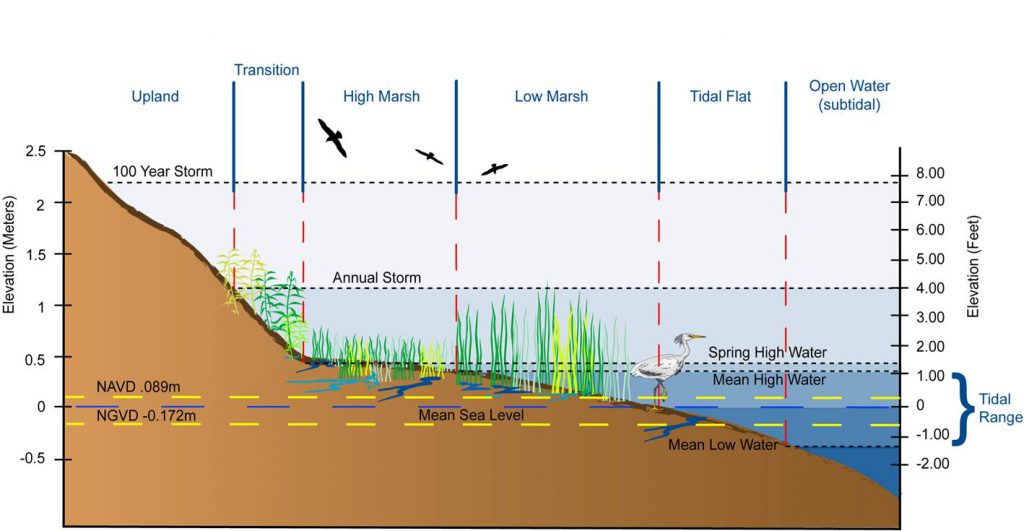Principle 7 – Climate Change
Restoration efforts should consider climate change projections and be designed with a dynamic climate in mind, taking into account projected sea level rise for coastal wetlands. (vi)
Description:
Wetlands serve as natural buffers against flooding, promoting resiliency against the current and future impacts of climate change, such as sea level rise (SLR) and increased storm surges. Current scientific projections are that global sea levels are projected to rise from six inches to one foot by 2050, and two to six feet by 2100. Given that many of our coastal wetlands have been lost or degraded, restoration of the remaining wetlands is paramount to protecting the public investment, serving as the first line of defense against SLR. Wetlands combat the effects of climate change by acting as a sponge, absorbing flood waters; through accumulation of sediment which creates new land and habitat, protecting public investment from storms and SLR; and by serving as a carbon sink, capturing and storing carbon from the atmosphere.
Wetlands restoration projects need to consider and integrate approaches that maximize the protective benefits of coastal wetlands, while integrating restoration strategies that can manage longer term sea level rise. These design approaches are very specific to each coastal wetlands restoration situation.
An important management strategy to ensure wetland sustainability is the prevention or reduction of additional stress that can reduce the ability of wetlands to respond to climate change. Maintaining hydrology, reducing pollution, controlling exotic vegetation, and protecting wetland biological diversity and integrity are important activities to maintain and improve the resiliency of wetland ecosystems so that they continue to provide important services under changed climatic conditions (Kusler et al. 1999; Ferrati et al. 2005).
Salt marsh restoration can be a good adaptation strategy to sea level rise (Government of Canada and Government of Nova Scotia 2002). However, this response requires a certain adaptive capacity. Some communities have more adaptive capacity than others due to the strength of their social, economic and environmental systems, equitable resource allocation, high skill levels, and the ability to disseminate useful information. Each community is unique and each has different vulnerabilities and strengths which contribute to its adaptive capacity. A community may choose to restore a salt marsh for its ecosystem, economic and/or social values, or for other reasons (Marlin et al. 2007).
A new NOAA study found coastal areas along the East Coast could be more vulnerable to storm surges and sea level rise in future El Nino years. Caption and photo source: NOAA
Reference:
vi. Erwin KL (2009). Wetlands and global climate change: the role of wetland restoration in a changing world. Wetlands Ecology and Management 17: 71-84


